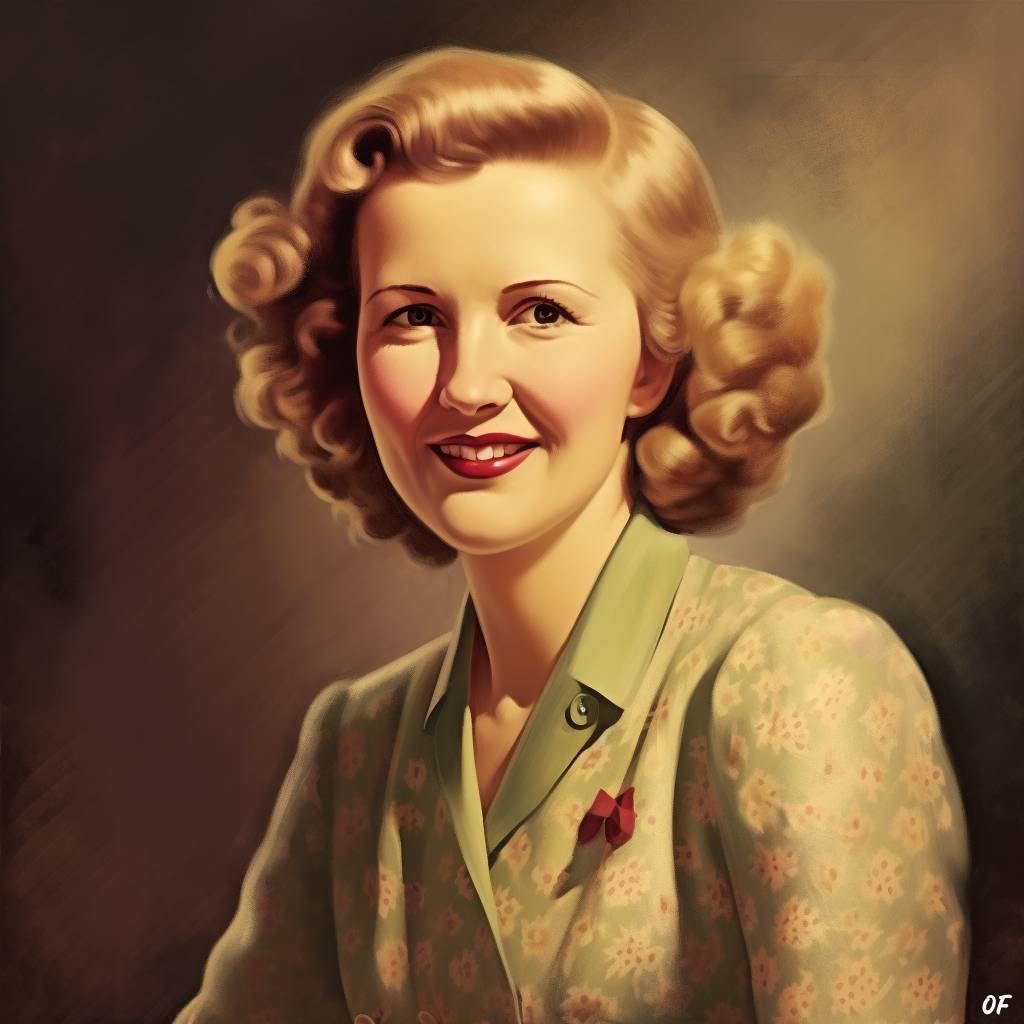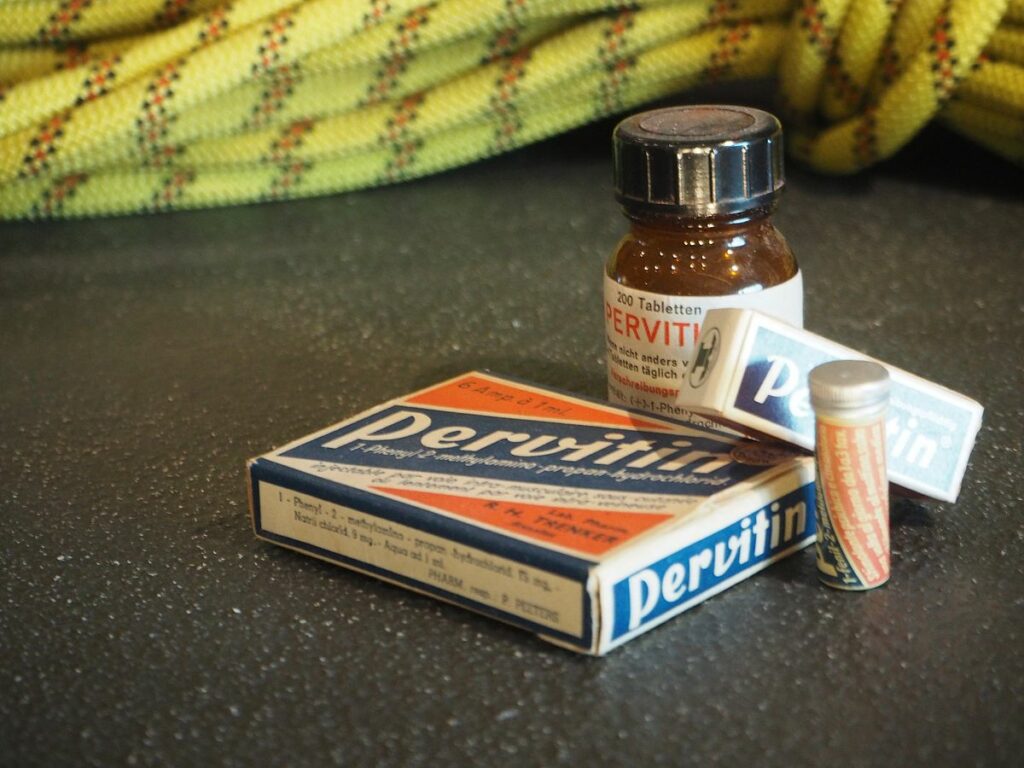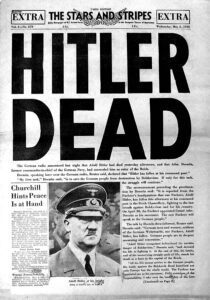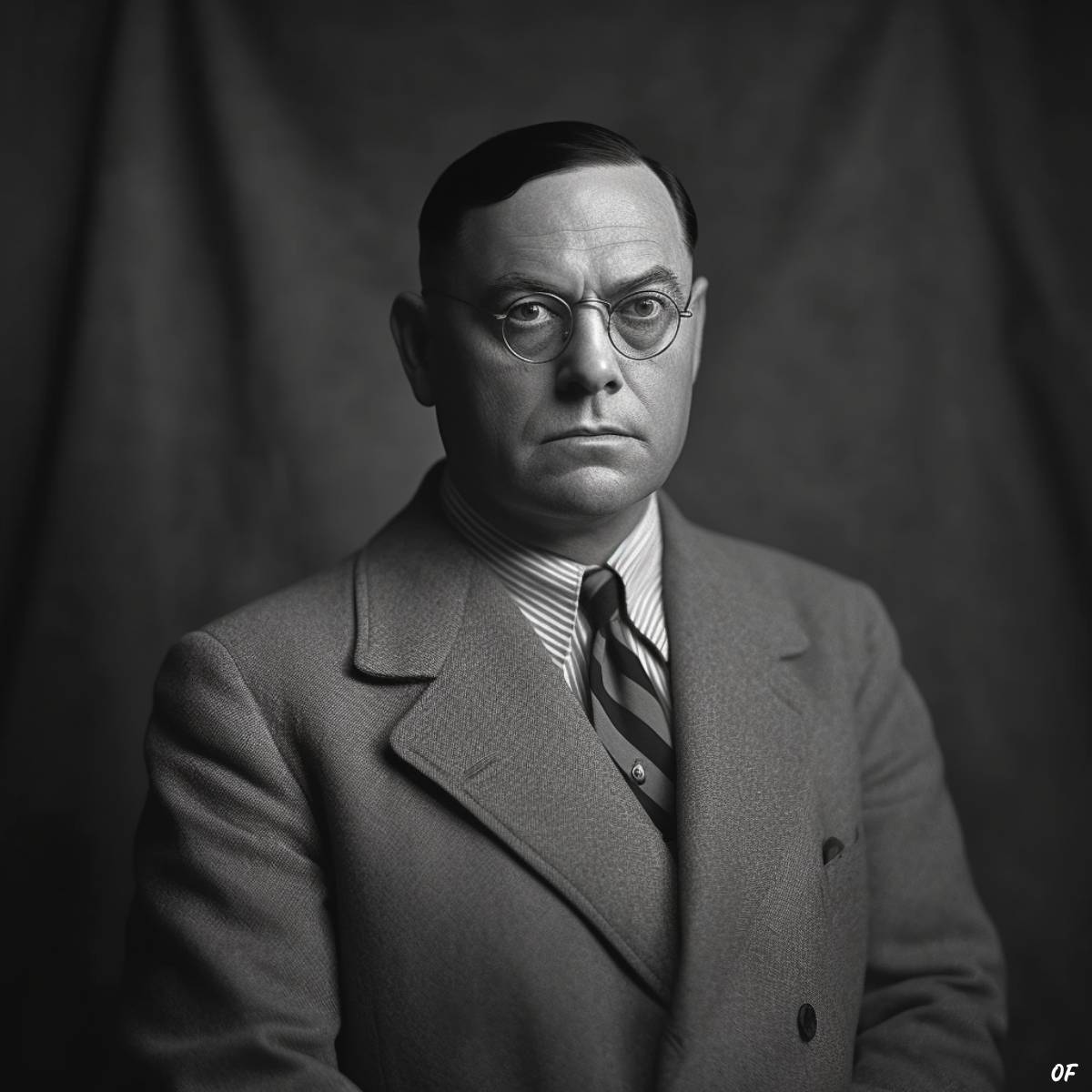Theodor Morell worked as Adolf Hitler’s doctor. He pumped the Führer full of hard drugs for nine years, including cocaine and crystal meth.
In 1930s Germany, there was a name on the lips of the wealthy elite: Theodor Gilbert Morell. A trained doctor, with a special interest in alternative medicine, his services were expensive, fashionable, and exclusive. So exclusive, in fact, that he turned down requests from the Shah of Persia and the King of Romania to work as their private physicians.
But he didn’t turn down the advances of Adolf Hitler. From 1936 to 1945, Morell was employed as Hitler’s personal doctor. During that time, he treated the Führer with various unconventional substances, including intestinal bacteria, bull semen, and several commercial poisons. He also prescribed some harder drugs, most notably crystal methamphetamine.
Hitler’s health
Hitler suffered from a number of health issues, including troublesome rashes and recurring stomach cramps. Some historians believe he suffered from a long-term syphilis infection, possibly acquired from a German prostitute, although this theory is contested.

As well as skin and stomach problems, there were rumors that Hitler had monorchism: a condition where the victim lacks a second testicle. This rumor became widely known, and during the war, the British army even had a famous marching song entitled: ‘Hitler Has Only Got One Ball.’ Much later, in 1968, a Soviet journalist uncovered some medical notes from a Russian physician, who claimed to have performed an autopsy on Hitler’s body. The notes described how “the left testicle could not be found.”
These medical notes are unreliable. In all likelihood, an autopsy was never performed on Adolf Hitler. At the end of the war, after he committed suicide, his remains were cremated before the Russian army arrived on the scene. Most historians believe that Hitler’s monorchism was an urban myth, probably invented in an effort to undermine him.
Whatever the state of his genitals, his other ailments were very real. He began hunting for other solutions when traditional treatments failed to alleviate the symptoms.
Dinner with Doctor Morell
In 1935, Hitler spoke to his personal photographer, Heinrich Hoffmann, who had just visited an unconventional doctor named Theodor Morell.
Hoffmann sang Morell’s praises and explained to Hitler how the doctor had used alternative medicines to cure his gonorrhea. The treatment wasn’t cheap, but Hoffmann assured Hitler that Morell was worth the price. Eva Braun, Hitler’s partner then, was similarly effusive about Morell. Her mother had also been treated by the doctor, with as much success as Hoffmann.
Intrigued, Hitler asked Eva Braun to invite Morell to a private dinner. In 1936, the two men sat down to talk.

Despite his medical background, Doctor Morell was hardly the picture of radiant health. He was chronically overweight and had a strong body odor and various other eccentric habits, which many found hard to stomach. Christa Schroeder, Hitler’s personal secretary, observed how Morell would eat an orange like an apple, biting through the skin until the juice ran down his chin.
Hitler managed to overlook all this. During dinner, he told Morell about his pervasive stomach cramps and the painful rash on one of his legs. The doctor suggested that Hitler take a concoction of vitamins, hormones, phosphorus, dextrose, and a strain of E. coli called Mutaflor. Most conventional doctors would never have suggested such a combination of drugs, but Morell insisted it would work.
Hitler decided to give the concoction a chance, and his symptoms improved. His stomach cramps became manageable, and the rash on his leg disappeared.
The next time he met with Theodor Morell, he offered him a full-time job. Hitler wanted more of the doctor’s alternative medicines, and Morell was more than happy to oblige. He became Adolf Hitler’s de facto physician for the next nine years.
Hitler’s doctor
Morell’s intimate relationship with Adolf Hitler can be charted through his medical diaries, which include detailed lists of the various drugs he prescribed the Nazi leader. As well as continuing to help with his skin and stomach issues, Morell began treating Hitler for sleeping problems, colds and flu, muscle weakness, intestinal infections, and heart trouble.
Morell believed that any ailment could be successfully cured with the right combination of substances. According to his medical diary, Morell prescribed Hitler 74 different substances during their time together. These concoctions were usually taken as pills, but also included injections.
Despite the initial success of Morell’s remedies, his later concoctions were hit and miss. Some of the substances he prescribed Hitler had little effect, while others caused more harm than good. But Hitler’s faith in Morell didn’t waver. He said, “I have the greatest confidence in him. I shall follow his prescriptions to the letter.”
Not everyone was quite so trusting. Albert Speer, the Minister of Armaments and War Production, thought Theodor Morell was taking advantage of the Nazi leader. He said, “If Hitler had the faculty for placing others under his spell, in this case, the reverse relationship developed: Hitler was completely convinced of his personal physician’s genius.”
Hitler was particularly fond of an energy drug called Vitamultin, which Morell administered regularly to invigorate him up at the start of each day. Hitler recommended the drug to Heinrich Himmler, another prominent member of the Nazi Party, who secretly had the drug analyzed in a lab. As it turned out, “Vitamultin” was simply methamphetamine.
Hitler’s addiction
Crystal meth was not regarded as a dangerous drug in the 1930s. Many people in Nazi Germany were taking methamphetamine energy pills, which were readily available over the counter from high street chemists. The side effects of the drug, known commercially as Pervitin, were not widely recognized at the time.

However, these side effects were all too real: addiction, paranoia, delirium, memory loss, and in long-term users, brain damage.
During his time with Theodor Morell, Hitler developed limb tremors and began to walk with an awkward, shuffling gait. Some historians have attributed these symptoms to Parkinson’s disease, a degenerative condition that is often a by-product of methamphetamine abuse. Hitler was also given cocaine in the form of eye drops, and heroin-like opiates to calm him down.
Another Nazi physician, Doctor Karl Brandt, tried to warn the führer that his general health was declining, but Hitler refused to sever ties with Morell. By this stage, their relationship had evolved from patient and doctor to addict and dealer. By now, Hitler was far too dependent on these drugs to consider cutting ties with Morell.
Traudl Junge, Hitler’s private secretary, wrote a vivid account of his relationship with Morell after several years of treatment: “Professor Morell, grunting and groaning, turned up in person every day to administer his usual miracle-working injections…Hitler was never angry with him, but as solicitous as if he were a child.”
It is hard to know whether Theodor Morell nurtured this dependency on purpose. Perhaps he was simply misguided and failed to recognize the effect his drugs were having on the Nazi leader. But it is certainly not beyond the realms of possibility that Morell deliberately sowed the seeds of this addiction. After all, Adolf Hitler was a powerful patient, and Morell would not have wanted to lose his patronage.
During his time as Hitler’s personal physician, Morell was paid a healthy salary. On top of this, he persuaded the Führer to open a number of factories, which mass-produced some of Morell’s unique concoctions. These concoctions were commercialized for vast sums and sold to the army through lucrative contracts. By the end of the war, Morell had amassed a small fortune, not to mention a great deal of prestige.
Again, it is hard to know whether he intentionally nurtured Hitler’s dependency. But it isn’t beyond the realms of possibility that Theodor Morell knew exactly what he was doing.
Hitler’s death

At the end of World War II, with enemy armies marching towards Berlin, Hitler committed suicide. This brought his relationship with Theodor Morell to a sharp, sudden end. Like many members of the Nazi Party, Morell tried to flee the country, but he didn’t get far before he was captured by Allied forces.
He was interrogated by British intelligence officers. One of them described him as a “gross but deflated old man…with the hygiene habits of a pig.” They went on to wonder how “a man so utterly devoid of self-respect could ever have been selected as a personal physician by anyone who had even a limited possibility of choice.”
Despite his close interactions with Adolf Hitler, Theodor Morell was never charged with war crimes. His relationship with the Nazi Party was opportunistic rather than ideological, as he amassed significant personal wealth like a parasite feeding on a host. He was released from captivity and returned to his life in Germany.
But his freedom was short-lived. Still grossly obese and struggling with poor health, Morell died in 1948. He probably tried to avert his death with another one of his own concoctions, but the treatment, like so many others, completely failed to work.


